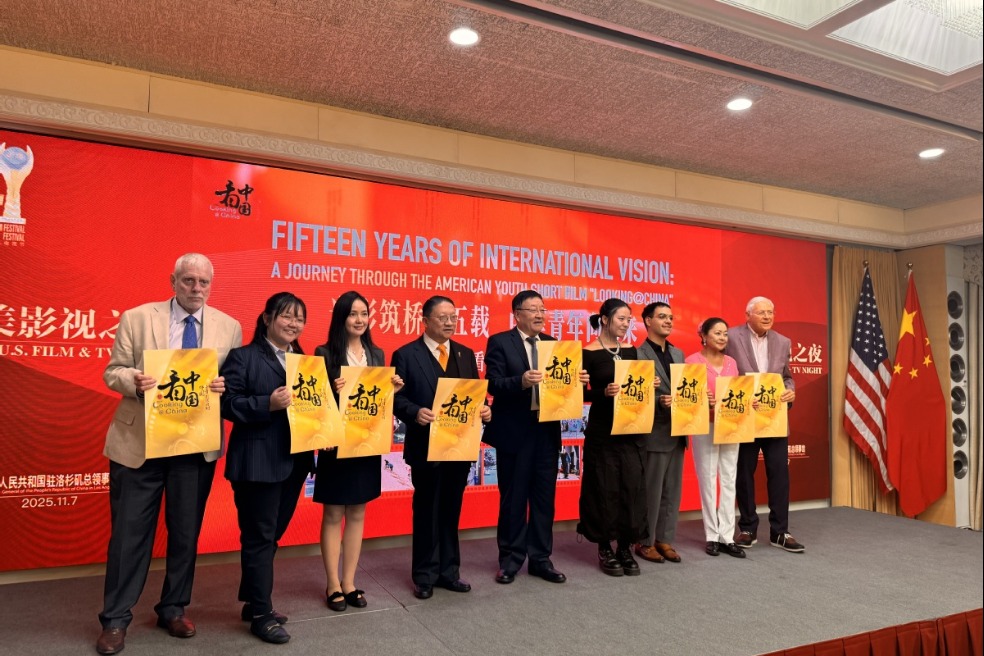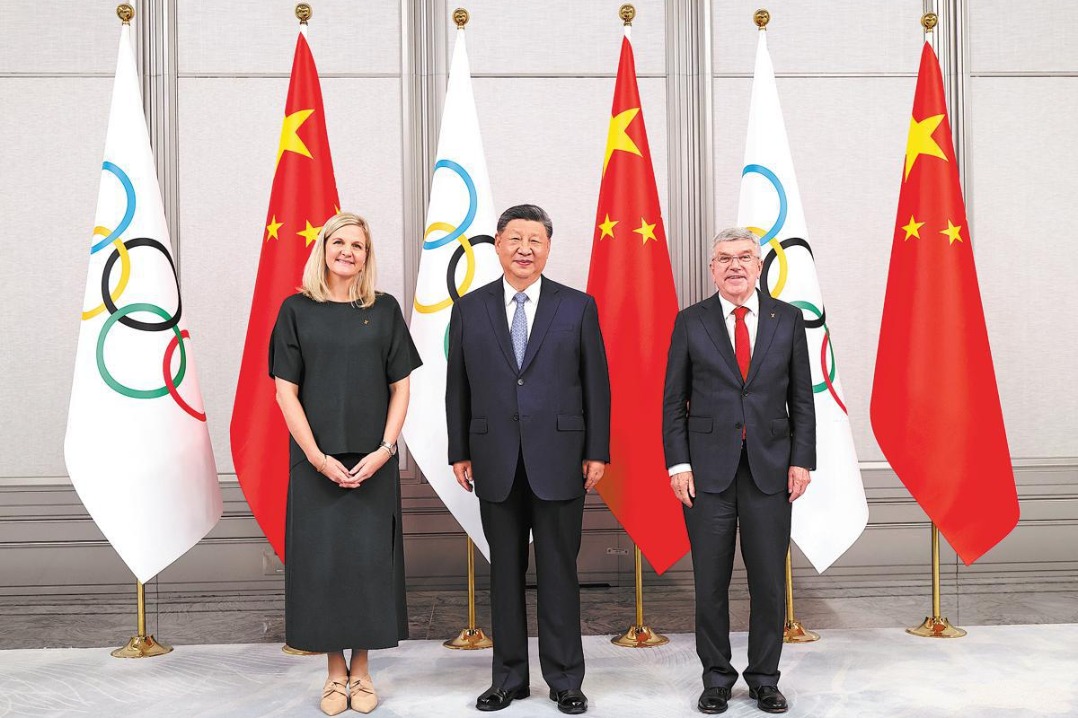Sugar-free teas evolve into wellness waters, spawning big market
Industry report predicts annual sales in China exceeding 10 billion yuan by 2028
By WANG KEJU | China Daily Global | Updated: 2024-09-16 09:37

Sun Xu, 29, who works for an internet-based company in Beijing, is acutely aware of the pitfalls of regularly consuming not-so-healthy takeout food, but her hectic schedule, stiff deadlines and ever-increasing job responsibilities leave her with limited alternatives.
But change sprang in the air the moment she discovered the rising popularity of Chinese wellness waters. Priced 6 yuan ($0.84) on average, each bottle of wellness water offers her solace, helping to offset some of the effects of fast food and encouraging her to adopt a healthier lifestyle.
Sugary sodas and syrupy fruit juices no longer dominate Sun's fridge. In their place are a variety of Chinese wellness waters, each carefully selected for its unique health benefits, to provide her with a sense of well-being rooted in age-old practices and natural ingredients.
Red bean and coix seed water, renowned for its ability to alleviate dampness and swelling, is a particular favorite. Longan water, with its calming properties, provides a soothing balm for her busy mind. Tangerine peel water, which aids digestion, is another staple, helping to alleviate the stress that work often places on her stomach.

While the exact impact of these beverages on people's health may elude precise measurement, consumers' willingness to patronize such products underscores a broader shift toward prioritizing ingredients and formulations perceived as healthier, analysts said.
According to a report by the Qianzhan Industry Research Institute, the Chinese wellness water market has seen a staggering surge in 2023, with full-year sales revenue reaching 450 million yuan, up over 350 percent year-on-year.
This is just the beginning, market observers said. The Qianzhan report predicted the compound annual growth rate will exceed 88 percent over the next five years. By 2028, sales are expected to exceed 10 billion yuan.
At their core, Chinese wellness waters represent an evolution of sugar-free teas, capitalizing on consumers' growing interest in health, wellness and natural products, said Zhu Keli, a researcher at the China Institute of New Economy.
As the competition in the sugar-free tea market intensifies, numerous brands are shifting their focus toward meeting consumer demand for healthier alternatives, giving rise to a new category of beverages that embody the essence of Chinese wellness, Zhu said.
Unlike traditional beverages, Chinese wellness waters do not have a strict definition. These products typically feature ingredients such as red beans, coix seeds, red dates and goji berries — centuries-old staples of Chinese cuisine and traditional medicine.
The surging popularity of Chinese wellness beverages has a direct bearing on a deep-seated cultural belief in the interconnectedness of food and health — a philosophy that has been integral to Chinese medicine for centuries, analysts said.
With a vast consumer base in China accustomed to incorporating these ingredients into their diets, their integration into beverages is meeting the growing demand for healthful, natural products that cater to consumers' wellness aspirations, said Zhu Danpeng, a Beijing-based food and drink sector analyst.
The Qianzhan report has also shed light on the primary reasons driving consumer purchases of Chinese wellness waters, with the top factors identified as weight loss and dampness removal, blood nourishment effects, sugar-free health benefits and clean ingredient lists.
These beverages offer a blend of flavors and wellness benefits that especially appeal to the needs of the younger generation who are tied to the high stress levels and fast-paced lifestyles, and hence crave health and balance in a simple and time-saving way, Zhu said.
According to a report by market research firm iiMedia Research in June, over 90 percent of consumers are allocating more than 50 yuan per month to wellness tea beverages.
What was once a niche product category has now blossomed into a competitive arena, with brands engaging in fierce competition to capture the hearts, taste buds and wallets of the growing number of customers.
The inception of Chinese wellness waters can be traced back to the pioneering efforts of the Keyang Beverage Co, which first introduced red bean water in 2018. Despite being an early entrant into the market, the brand had faced lukewarm reception and feedback from distribution channels.
In mid-2022, a drink with a whole ginseng root soaking in every bottle, and simply called "The Whole Thing", set off a brief but intense wave of excitement within the wellness beverage industry, triggering a surge in demand for this unique and health-focused drink.
Retailing at 19.9 yuan for a 480-milliliter bottle, it was produced by a small-sized enterprise in Wuhan, Hubei province. This innovative beverage quickly captured the imagination of more players to jump on the wellness water bandwagon.
The introduction of a diverse range of wellness waters by beverage brand Chi Forest last year impressed consumers and invigorated the market.
By May 2024, over 15 new brands had ventured into the Chinese wellness water market, signaling a surge in competition and innovation. Notably, Chi Forest has emerged as the front-runner in this competitive arena, commanding 58 percent of the market share, according to the Qianzhan report.
The development of the Chinese wellness water products was primarily inspired by Cantonese herbal tea, drawing on the rich tradition of medicinal beverages found across different regions, said Wang Xuegang, director of Chi Forest's research department.
With focus on promoting the benefits of staying hydrated with healthy water choices, the research and development team embarked on a journey to create a range of Chinese wellness water products that echoed the principles of traditional herbal tonics, Wang said.
The response from the market exceeded the expectations of the development team, with the first batch launched in February 2023 on e-commerce platform Tmall selling out within five days. This became one of the fastest-selling products within the brand's lineup, surpassing the 100 million yuan mark in just four months since its launch, Wang said.
The growing popularity of Chinese wellness waters in the beverage industry reflects a broader trend toward health-conscious consumption, analysts said.
Traditional favorites like carbonated drinks have seen a decline in popularity as consumers increasingly prioritize health and wellness in their beverage choices. This shift has led to a dynamic rotation of growth hot spots within the market, with health-focused beverages and sugar-free options emerging as rapidly expanding segments, said Bai Wenxi, vice-chairman of the China Enterprise Capital Union.
According to Nielsen IQ data, the domestic beverage industry has maintained a steady growth rate of 6.5 percent in the first half of this year, with a continued restructuring of category dynamics.
Specific category growth trends reveal a shift in consumer preferences, with carbonated beverages experiencing a decline of 6.7 percent, functional beverages seeing a robust growth of 10.6 percent, and ready-to-go tea soaring by 19.5 percent.
The Chinese wellness water market holds vast potential for growth in the long term, offering a range of opportunities for brands and consumers alike, Bai said. He, however, cautioned about challenges stemming from the lack of a structured regulatory framework and a uniform set of industry standards.
The absence of clear guidelines, he said, has led to a competitive landscape characterized by inconsistencies in product quality, marketing practices and consumer information.
wangkeju@chinadaily.com.cn
























